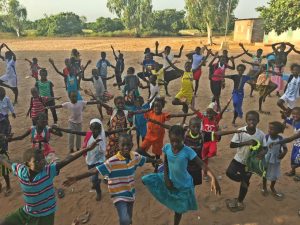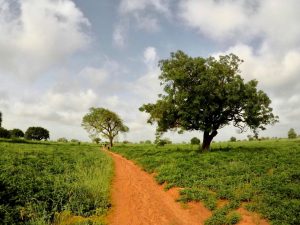This project is made possible through the partnership of WATER CHARITY and the NATIONAL PEACE CORPS ASSOCIATION. ![]()
Location 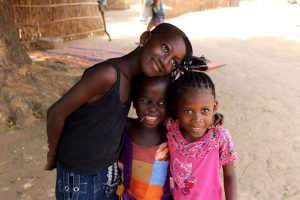
Sandicoly, Fatick, Senegal
Community Description
This village is located in one of Senegal’s national parks and has a beautiful mangrove-filled river delta running through it. The village has an estimated population of nine hundred and its main ethnic group is Serere.
Significant structures within the village include a primary school, middle school, mosque, two small boutiques, and a health hut. Beyond middle school, youth would have to outsource their education to a neighboring town that contains a high school. However, oftentimes, due to financial constraints and familial pressures, the high school attendance rate for youth in the village is very low.
The majority of community members are farmers who harvest their fields of rice, corn, millet, peanuts, cashews, mangos, watermelons, and onions. This occupation can be quite unpredictable. Issues out of the farmer’s control such as disease, or insufficient rains can pose a serious threat, making a stable income unreliable. Consequently, villagers typically do not have large sums of money available, making it extremely difficult to build private latrines at their own expense.
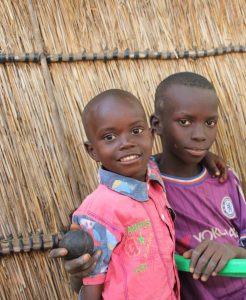 Problem Addressed
Problem Addressed
A multitude of factors play a role in the village’s health, but most importantly the lack of sanitation-based infrastructure leads to inauspicious health consequences. This absence gives rise to substandard WASH practices such as open defecation and not washing hands during the five critical times. These practices inflame health issues contributing to an increase in the presence of fecal matter in water and food, leading to preventable diseases such as diarrhea and food poisoning.
When the initial WASH baseline survey was conducted, twenty-four households demonstrated inadequate latrine structures. This currently forces about thirty percent of the village to openly defecate if no other means are available.
Ultimately, the lack of infrastructure is not only an inconvenience but poses great health concerns due to the deficient disconnection between feces and human contact.
Project Description
This project aims to build 24 ventilated pit latrines and provide 24 sustainable hand-washing stations at the household level in the village.
To ensure success and community participation, a latrine committee was formed made up of the Peace Corps Volunteer and three volunteer-based community members, each role having their own respective duties. The committee meets frequently to discuss progress, concerns, and questions associated with the project to assure the community is involved and informed at all stages.
The recipients from each household have a set of required tasks for them to complete in exchange for the subsidized latrine. A representative from each household will attend three health talks regarding proper WASH (water and sanitation hygiene) behaviors, along with instruction on proper latrine maintenance. The talks will be given by the Peace Corps Volunteer and her associated counterparts on the village-led Latrine Committee.
 In preparation for the construction, each household will dig a pit 2x2x2 meters (depth x width x length), and collect the appropriate amount of sand, water, and gravel. They will also pay 10,000 CFA (~$20 USD) as a cash contribution. Once the villagers have completed all their required tasks, they will sign off on a community contribution receipt.
In preparation for the construction, each household will dig a pit 2x2x2 meters (depth x width x length), and collect the appropriate amount of sand, water, and gravel. They will also pay 10,000 CFA (~$20 USD) as a cash contribution. Once the villagers have completed all their required tasks, they will sign off on a community contribution receipt.
When the project funding is received, and the beneficiary requirements have been met, the brick makers will manufacture the bricks. The masons will then come and construct the latrine pit, cement toilet seat, and ventilation system for the latrine over a period of two days.
The process of construction is as follows:
1. Masons will create and line bricks from cement, sand, and water to encompass the pit,
2. Bars from the iron will be assembled to establish the pit covering structure, which will then be covered with cement and gravel, and
3. PVC piping and the appropriate connection pieces will be assembled to form the ventilation pipe.
Community members will receive a proper handwashing plastic station and soap at the completion point of their latrines. Upon receipt of the station, community members will need to demonstrate to the committee proper handwashing technique learned at one of the health causeries. At this point, it is up to the beneficiary to decide which type of enclosure infrastructure they will add to the top of the provided pit.
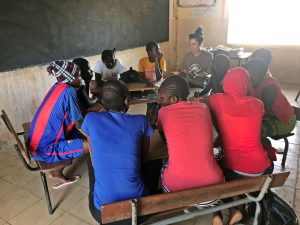 Once the process is completed, the Peace Corps volunteer and counterpart will visit each household to ensure satisfaction, latrines are well-constructed, and individuals are washing their hands thoroughly. A satisfaction and outcomes survey will be given to each beneficiary household to better support the monitoring and evaluation.
Once the process is completed, the Peace Corps volunteer and counterpart will visit each household to ensure satisfaction, latrines are well-constructed, and individuals are washing their hands thoroughly. A satisfaction and outcomes survey will be given to each beneficiary household to better support the monitoring and evaluation.
Project Impact
270 people will benefit from the project
Peace Corps Volunteer Directing Project
Sarah Elmiry
Monitoring and Maintenance
Three months after completion of the last latrine, the Peace Corps Volunteer and counterpart will conduct surveys to each recipient household to assess and follow up on the usefulness of latrines and hand washing stations. There will be future health talks surrounding the topics of latrine care and proper WASH behaviors given by the original Latrine Committee members for years to come.
The households will further maintain and fix their latrines, utilizing information learned at the latrine care talk, in hopes to keep the latrine functioning into the next decade.
Fundraising Target
$3,750
Funds raised in excess of the project amount will be allocated to other projects in the country.
Donations Collected to Date
$140
ADOPT THIS PROJECT BY CONTRIBUTING THE DOLLAR AMOUNT OF THE PROJECT
Donations of any amount will be appreciated. The full amount will give you “naming rights” if that is something you would like.
Dollar Amount Needed
$3,610
